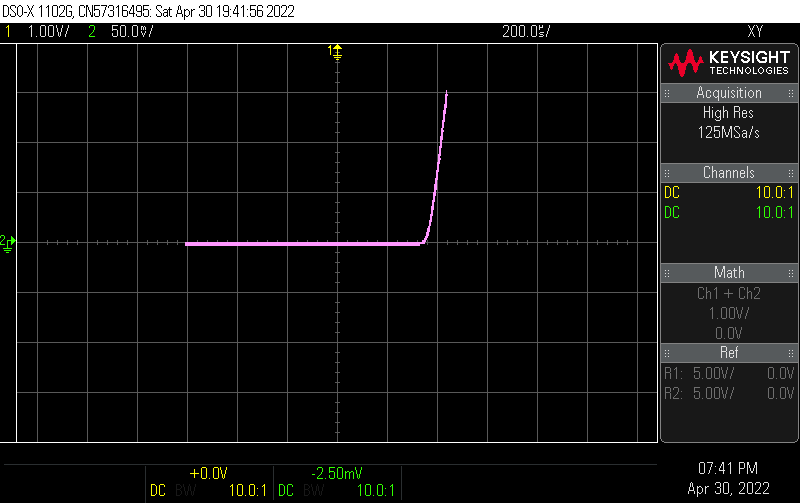If you are like me you don't use the XY plot function on your oscilloscope often but it can be handy at times. I was reviewing videos by W2AEW on YouTube and saw this one where he describes a simple method for viewing components using only a waveform generator and an oscilloscope. The short (less than 3 minutes) video below demonstrates how it works.
The setup is quite simple.

The function generator produces a triangular waveform across the DUT which is in series with a shunt resistor used to measure current. The oscilloscope in XY mode has the X-axis set to measure the voltage across the DUT while the current is displayed on the Y-axis. There is a problem with this setup, however. The X-axis probe is measuring the voltage across both the DUT and the shunt resistor. This can be acceptable if the voltage drop across the shunt resistor is small. Some oscilloscopes allow the math function to be used in XY mode so that the voltage across the shunt resistor can be subtracted from the DUT reading. Mine does not. Other approaches would be to use a differential probe for the DUT or a current sensing probe for the current.
My oscilloscope is a Keysight DSO-X 1102G which has a built-in waveform generator. The waveform generator was set to 50-ohm output with a 3V p-p symmetric triangle wave. To get a clean trace the acquire mode on the oscilloscope has been set to high resolution.
The screenshot below shows a red LED under test.

Thanks for reading and comments are always welcome!

Top Comments